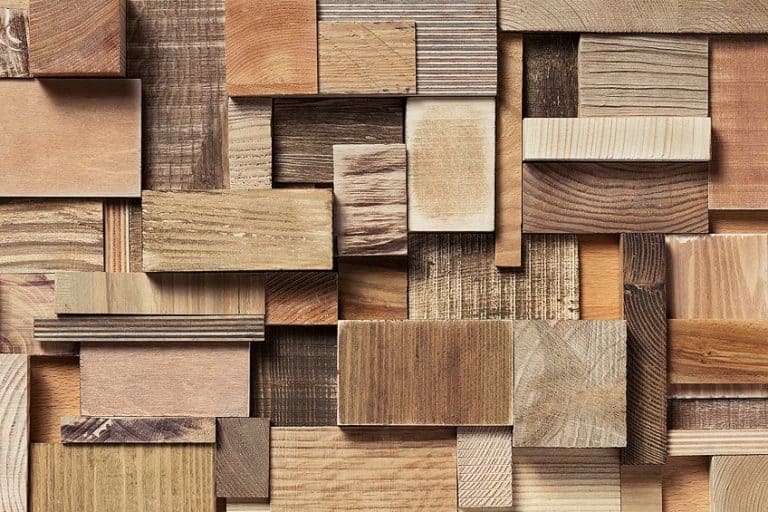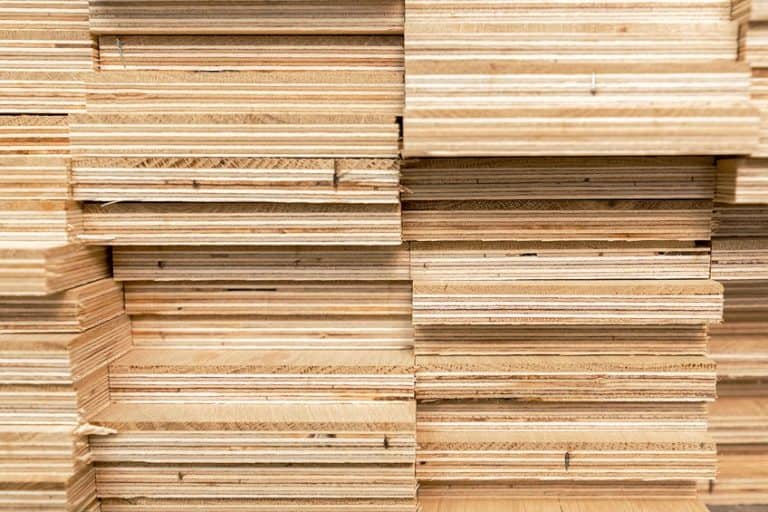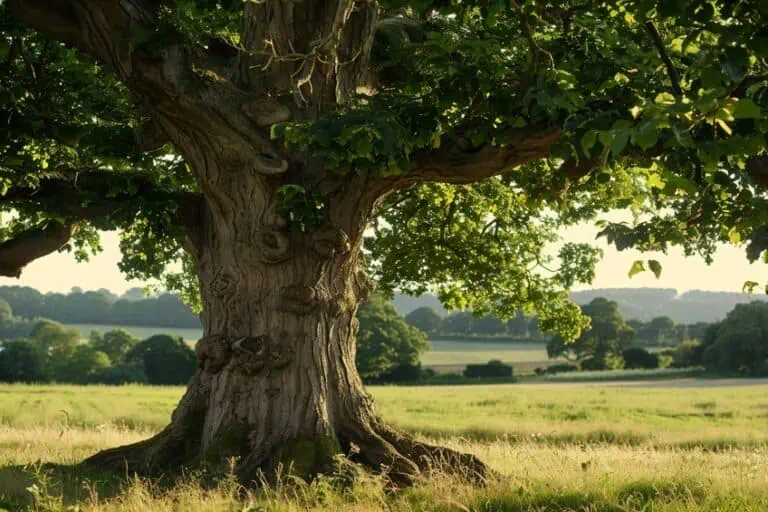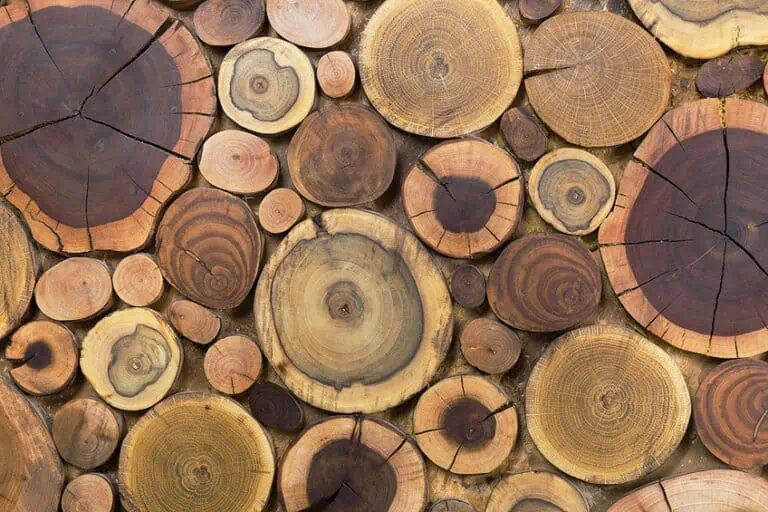Acacia Wood vs. Teak – Which Durable and Water-Resistant Wood to Use
It can be challenging to find a hardwood to use these days. There are so many options to choose from, all of which have their distinct advantages and disadvantages. When it comes to choosing a wood species for flooring some of the more popular choices are hardwoods like oak or pine, but for those looking for a more refined aesthetic, there are even more wood species to suit your taste. Two of the best alternatives to oak and pine wood are teak and acacia wood, which have proven to be just as versatile and even better looking in some instances (it does depend on your taste, though). This being said, let’s have a look at what exactly teak and acacia are, some of their characteristics, where they’re best suited to be used, how affordable they are, which one is easier to work with, and which takes to wood treatment best.
Table of Contents
Acacia Wood vs. Teak Characteristics
Let’s have a look at acacia wood vs. teak characteristics. Although these wood species are similar in loads of ways, they have some distinct attributes that make them the ideal choice for some applications more so than others. This is why we have prepared a short list of some of the key characteristics of acacia wood and teak wood respectively to make choosing between them that much easier.
Always remember that no matter how good wood looks, you should always consider the tolerances and intended applications of a wood species before committing to one.
| Characteristic | Acacia Wood | Teak Wood |
| Grain Pattern | Straight and wavy grain | Straight grain |
| Odor | Virtually odorless once cut | Pungent odor |
| Color | Reddish brown | Light brown/chocolate |
| Janka Hardness Rating | Janka hardness of 1000 to 4000 | Janka hardness of 2330 |
| Price Range | Relatively affordable | Expensive |
| Ease Of Use | Easy to work with | Challenging to work with |
| Suitability For Wood Carving | Quite conducive for wood carving | Not suitable for wood carving |
| Resistance to Moisture/Water | Highly resistant to water | Highly resistant to water |
| Antibacterial Properties | Natural antibacterial properties | No antibacterial properties |
| Durability | Highly durable | Highly durable |
| Resistance to Acidic Corrosion | Low resistance to acidic corrosion | High resistance to acid corrosion |
| Origin | Africa and Australia, Southwestern US, and South and Central America | South East Asia, was translocated to Africa and South and Central America |
| Reaction to Wood Treatment | Accepts wood stain and treatment oils well | Reacts well only after after thorough sanding |
| Reaction to Paint | Reacts well to paint | Reacts well to paint |
| Availability | Readily available | Availability can vary depending on region and genus |
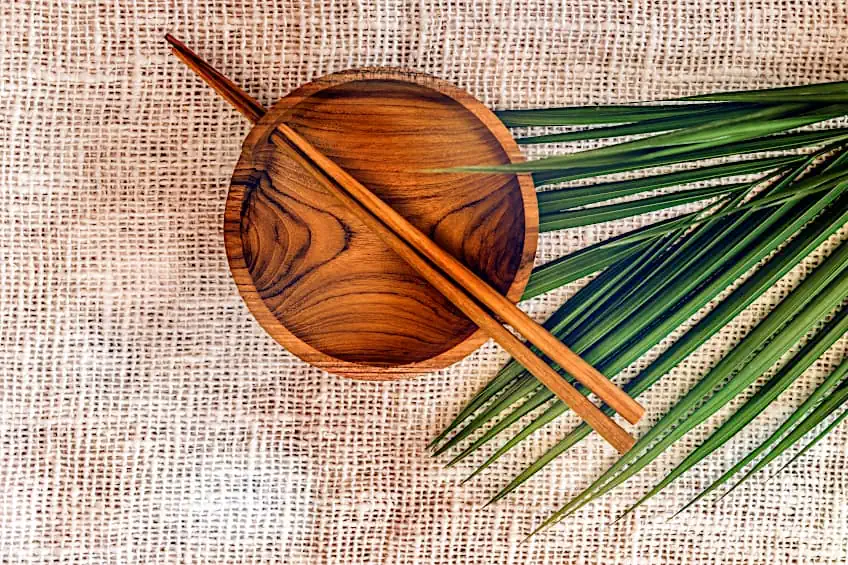
Acacia vs. Teak: What Are the Best Applications for These Woods?
While it’s all well and good knowing what the basic characteristics of teak vs. acacia are, it’s not much use if you don’t know where they’re best used. Both woods are pretty versatile despite the slight differences in their characteristics and tolerances.
This being said, let’s have a look at some of the most common and best-suited applications for both acacia and teak wood, as well as why they’re best used for these purposes.
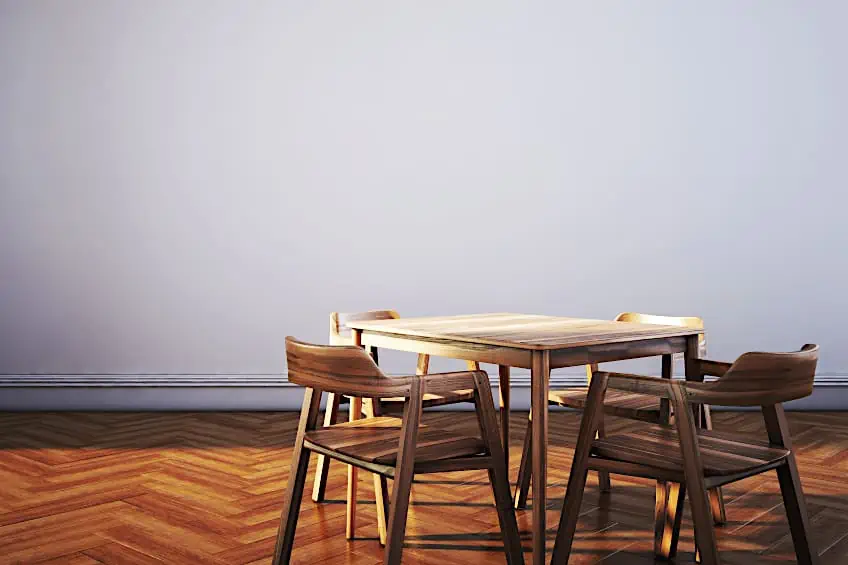
Acacia Wood
Acacia wood is somewhat more accessible compared to teak. After all, it’s a lot cheaper and marginally more readily available compared to teak, so it makes sense that we’d use it more. Acacia is used in many applications in various industries all over the world thanks to its strength and durability, so let’s have a look at a few of them and why acacia wood is such a good fit.
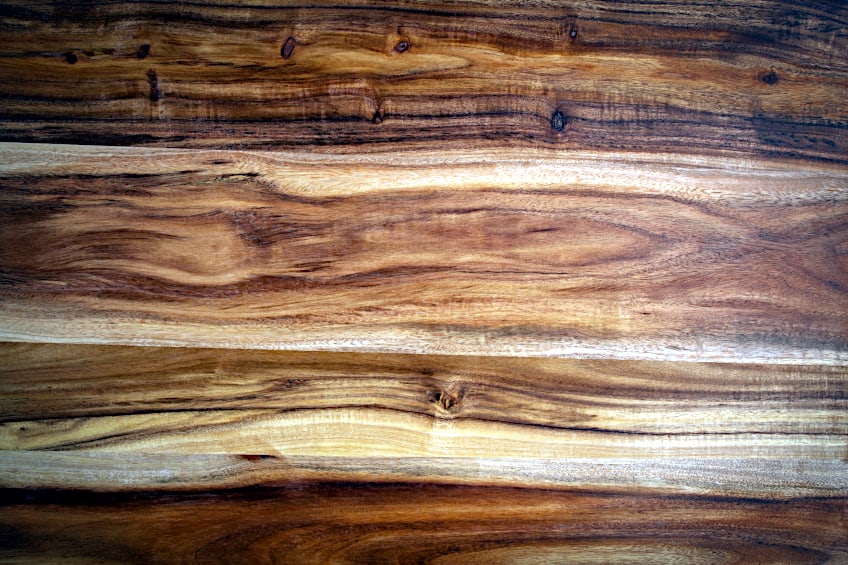
Thickening Agents
While the wood of the acacia tree is good for a whole host of applications, the sap of acacia wood is also pretty useful. Both the wood and sap can be used as a thickening agent for food, which is a great natural solution compared to synthetic agents.
Acacia is most commonly known for its applications in furniture creation, although this wood’s versatility goes far beyond furnishings.
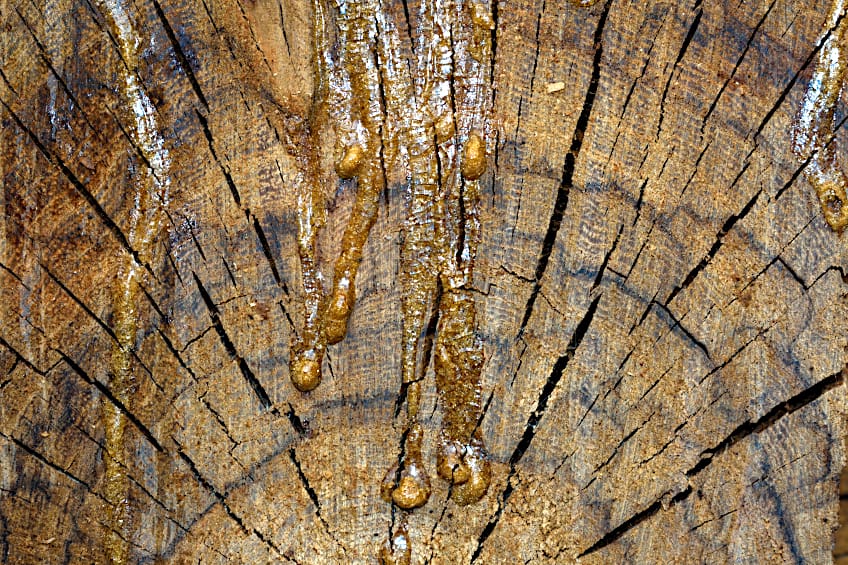
Construction Applications
One of the primary applications that acacia wood is used for besides furniture is for structural applications. Because acacia wood is rigid, dense, and resistant to the effects of moisture, it is often used to create structural beams for roofing and even more visible load-bearing applications like support beams and columns in cabins and modern suburban homes.
The hardness and strength of acacia means it also has the added benefit of being available in extra length boards.
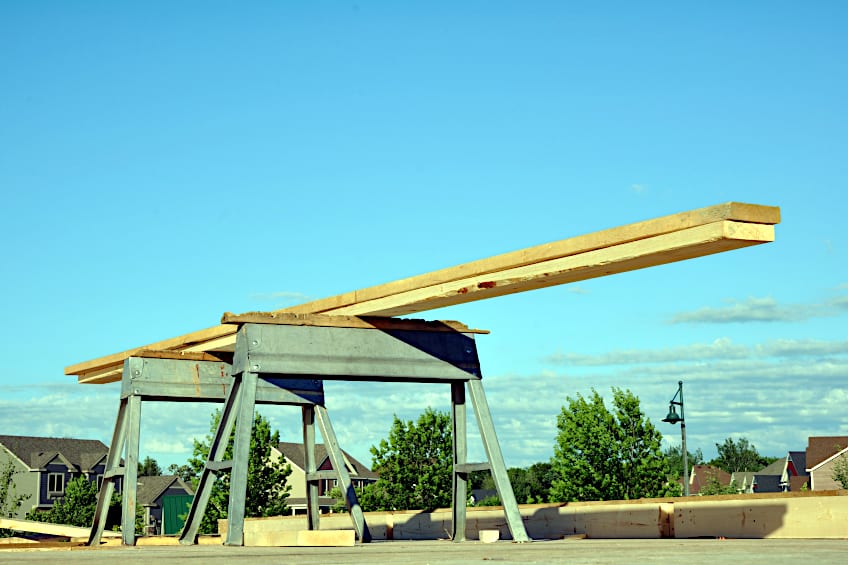
Furniture Construction
Acacia wood is one of the go-to materials when it comes to the construction of outdoor furniture. This is due to its ability to receive wood treatments like stain and varnish quite easily, not to mention the fact that it naturally repels water.
Acacia wood is also relatively low maintenance, which means that you won’t have to constantly resurface and re-seal your outdoor furniture.
Surf and Bodyboards
Considering that acacia wood is inherently resistant to moisture, it should come as no surprise that it has been used for seafaring and water sports applications. Acacia, when formed and cut correctly, is both buoyant and durable.
In fact, is why many native Hawaiians have used the local Koa acacia wood in the construction of surfboards, body boards, and many other objects that require buoyancy like canoes and row boats.

Musical Instruments
Another Hawaiian utilization of acacia wood is the creation of musical instruments. They use a species of acacia wood known as Koa to create a variety of instruments thanks to this acacia species being a natural tone wood. This means that the wood inherently carries sound and subsequent vibrations resulting from it fairly well.
This means that drums, flutes, and even ukuleles can be made of Koa.
Medicines and Cosmetics
Acacia wood’s affordability and availability have made it the subject of many research projects. Some of which have resulted in the discovery that acacia wood can be used in the production and/or creation of both cosmetic products and medicines.
Namely, acacia wood is used to create scented oils and moisturizers, and it can be used to make things like medication that assists in wound healing, assists in pain relief, and is even a good source of fiber!
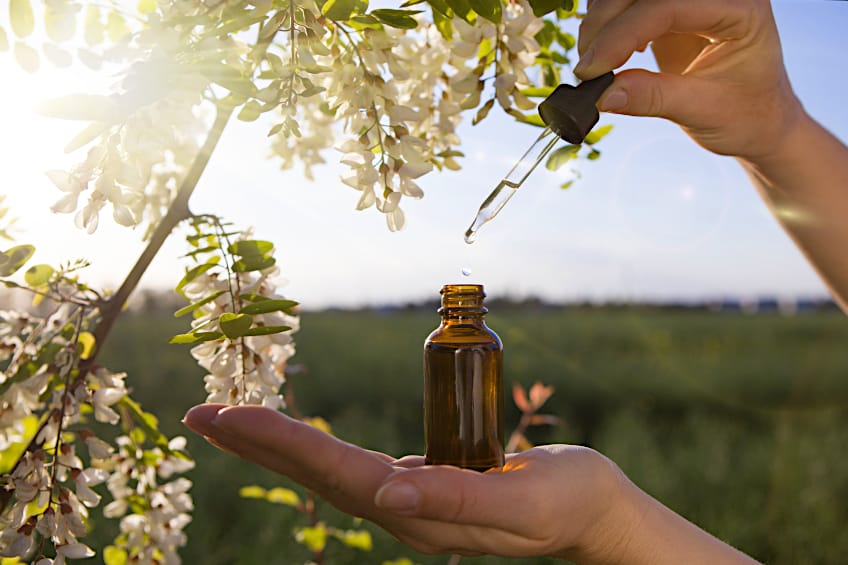
Flooring
What is arguably the best aesthetic and practical application of acacia wood is its use in the creation of flooring. This is because acacia is affordable and can therefore be used to floor large spaces, all while being extremely affordable and immune to the effects of things like insect infestation and moisture damage.
Acacia is also relatively malleable and easy to treat, which means that cutting, sanding, fastening, staining, and even sealing your acacia flooring requires little effort compared to other hardwood species used for flooring.
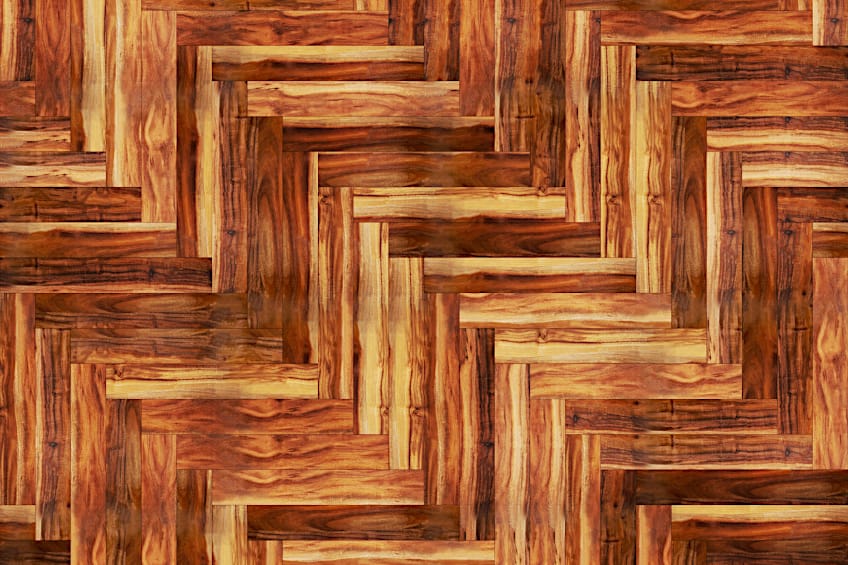
Kitchenware
As acacia is both highly durable and waterproof it makes it ideal for the manufacture of items used in food preparation and service, such as cutting boards, bowls, trays, serving spoons and so on. Acacia can take a lot of punishment, so it requires less maintenance than most woods.
However, if you do wish to use a sealer or treatment on your acacia kitchenware, ensure that it is a food safe substance like linseed oil, tung oil, or beeswax.
Teak Wood
Teak wood, like acacia, is also quite versatile. Unlike acacia wood though, teak has a natural aesthetic appearance, which many consider to be superior to the natural look of acacia. Besides its look, teak is pretty similar to acacia in that it is highly durable and resistant to the effects of moisture, insects, mold, and prolonged exposure to direct sunlight.
Unlike acacia, though, teak isn’t nearly as readily available, affordable, or as easy to work with as acacia, so let’s have a look at what it’s used for in comparison to acacia wood.
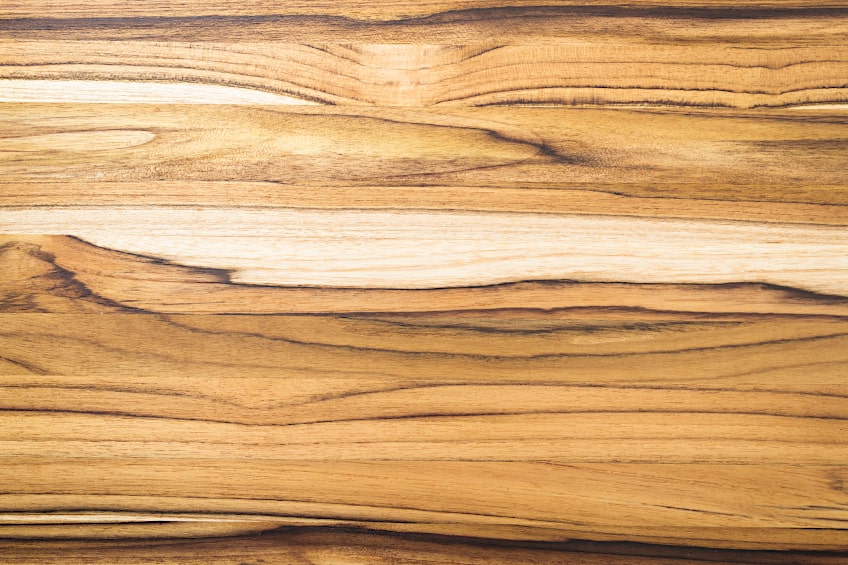
Boating
Both acacia wood and teak are incredibly resistant to moisture, so it doesn’t come as much of a surprise that both of them are used on seafaring vessels. The water-fastness of teak has made it the prime choice for traditional boatbuilders in Southeast Asia for centuries.
In modern boatbuilding, acacia is typically used in the construction of the vessel’s frame and hull, while teak is used as a high-end flooring option for the decks of yachts and smaller vessels.

Outdoor Furniture
If you’ve visited a fancy bar recently, or a nice restaurant with an outdoor deck then you’ve probably encountered teak furniture. Teak is used to make furniture like deck chairs, garden tables, and even the poles of those large umbrellas at beachside resorts.
This is because of teak’s incredible durability, good looks, resistance to moisture, and usually uniform wood grain.
Flooring Boards
One of the times that the choice between teak and acacia wood is commonly debated is when it comes to flooring. While both can be used for flooring, teak typically has a better natural appearance, and it costs a bit more. It’s also more challenging to treat, but once treated (think tung oil or varnish) it is incredibly good-looking and becomes even more durable and moisture-resistant.
Teak wood flooring is also quite hard and therefore doesn’t warp or creek easily over time, which is one of the reasons it has long been such a popular choice for parquet floors.
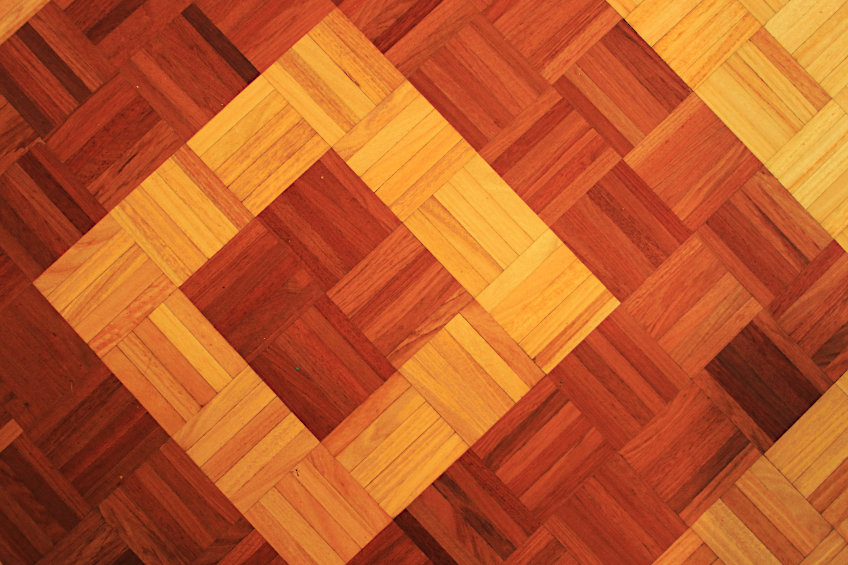
Construction
Teak wood can also be used for load-bearing and construction applications. Since teak is a good wood for outdoor applications, it can be used in the construction of small structures like tree houses, sheds, decks, swing sets, and even plant holders. It is the ideal wood for outdoor use because it isn’t affected by external forces like wind, impact, abrasion, moisture, insects, and even direct sunlight.
This combination of strength and resilience is desirable but considering that teak is so very expensive, it isn’t used nearly as much as acacia wood is.
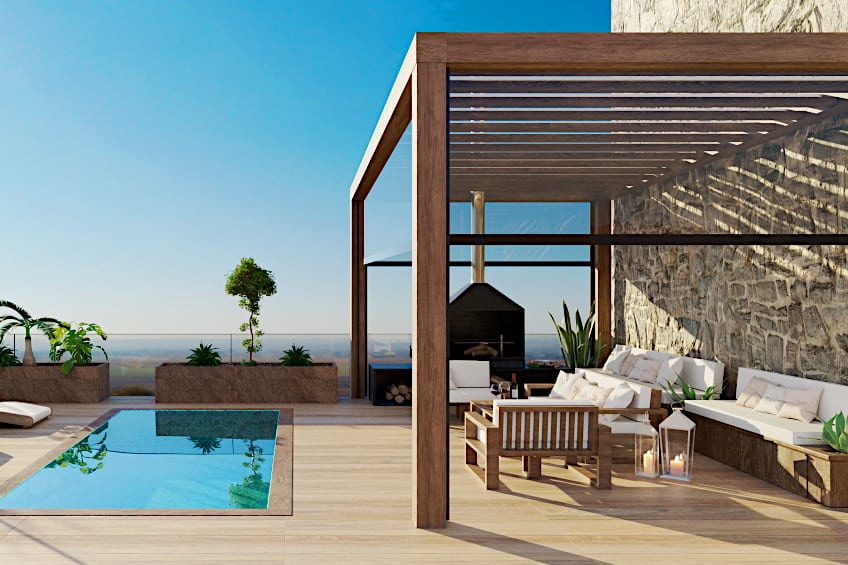
Veneers
Teak can also be used to create a teak veneer. Don’t know what veneer is? Well, simply put, veneers are paper-thin slices of wood that are typically applied to the surfaces of engineered woods like plywood. Teak has a unique look to it thanks to its grain, color, and texture, which is why teak wood veneer is so sought after.
Besides, who wouldn’t want the look of a teak finish at a fraction of the cost?
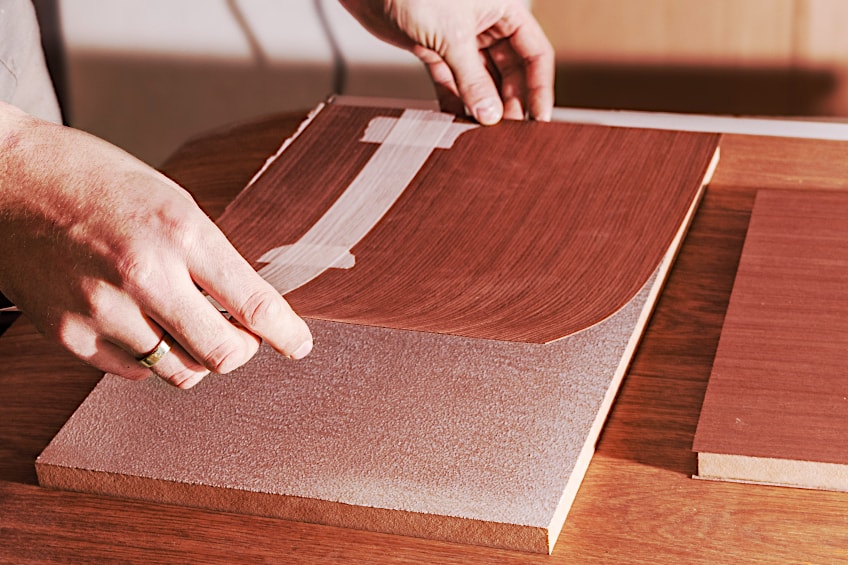
Doors and Window Frames
Although wooden window frames are becoming a rarity these days, they’re still around, and if you happen to come across some, they’re likely to be made of teak or acacia wood. Teak is preferred in more high-end construction applications though (because it’s more expensive) and is often used to furnish both doors and window frames in some homes for those who are by the means.
It’s pretty good for these applications too, considering that the chances of your doors and window frames won’t damage easily and they look good for pretty much your entire lifetime.
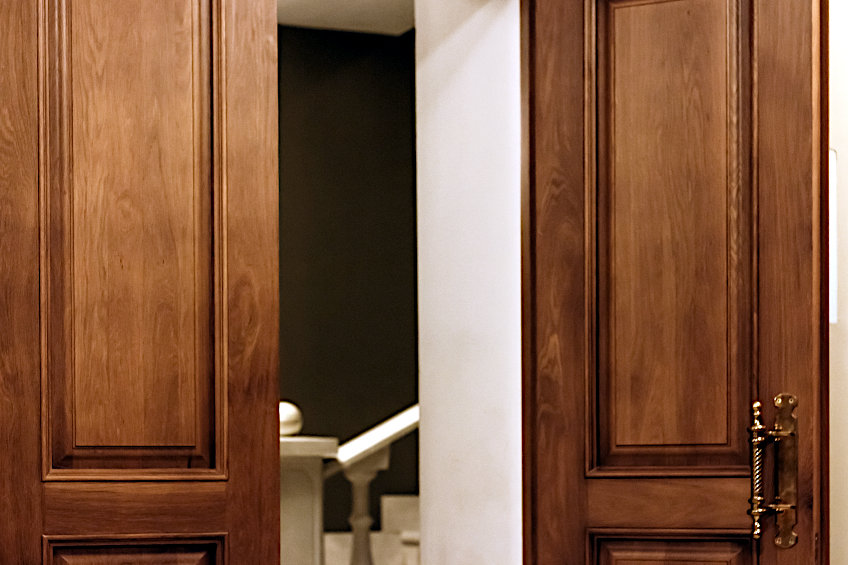
Wood Carving
Wood carving is a niche and highly respectable hobby. Both acacia wood and teak are commonly used in the wood carving trade, although teak is a lot more challenging to work with because its grain tends to vary between straight and wavy.
This makes it a bit of a challenge to carve by hand, but wood crafters endure this process as the finished product often has a unique look and feel to it even before a teak workpiece has been sanded and finished with oils or other wood treatments.
Does Acacia or Teak Stain Better?
Wood treatments like wood stain and varnish are often used as an alternative to paint. This is because even though paint offers you incredible colors for your wooden workpiece it often obscures the grain and texture of the surface being painted. This can be a bit of a deal-breaker if you’re paid a pretty penny to experience the texture of say, your teak wood furniture.
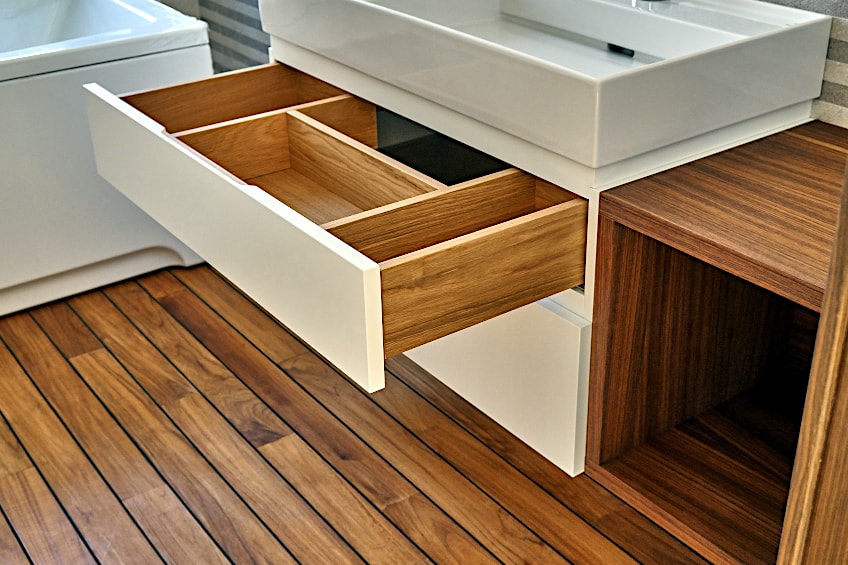
So, which accepts wood treatments better then? Well, objectively speaking, acacia wood tends to stain better than teak wood does. This is because even though the wood fibers and subsequent grain of acacia wood are quite densely packed, it’s relatively porous, which allows wood treatment oils and/or varnish to seep into these pores and bond with the wood fibers.
Teak, on the other hand, does not stain as easily as acacia wood does. This isn’t because teak isn’t as porous as acacia is, but rather because teak wood contains natural oils, which tend to prevent it from accepting wood treatments as easily. However, teak can be stained with a light sanding by applying more than one coat of wood stain or varnish and allowing each to set and dry completely before applying the next.
Which Wood Is Easier to Clean and Maintain?
Maintenance is something that drives many purchasing decisions these days. Much like buying a car, choosing a cheaper model might result in having to maintain and/or replace parts more regularly compared to buying one that costs more but has been constructed with superior materials.
This being said, which categories do acacia and teak fall into?
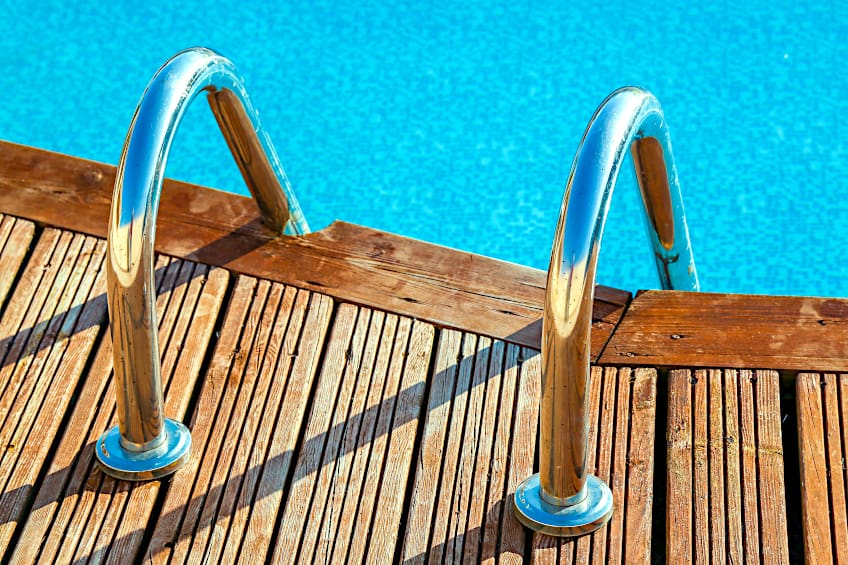
As you would expect, since acacia wood is cheaper, it needs to be maintained more often. Acacia wood is highly durable, but it can become brittle if it’s being assaulted by the elements regularly, and if this is the case, you could find yourself having to apply a wood surface wax or treatment oil occasionally to avoid the wood splitting and/or cracking.
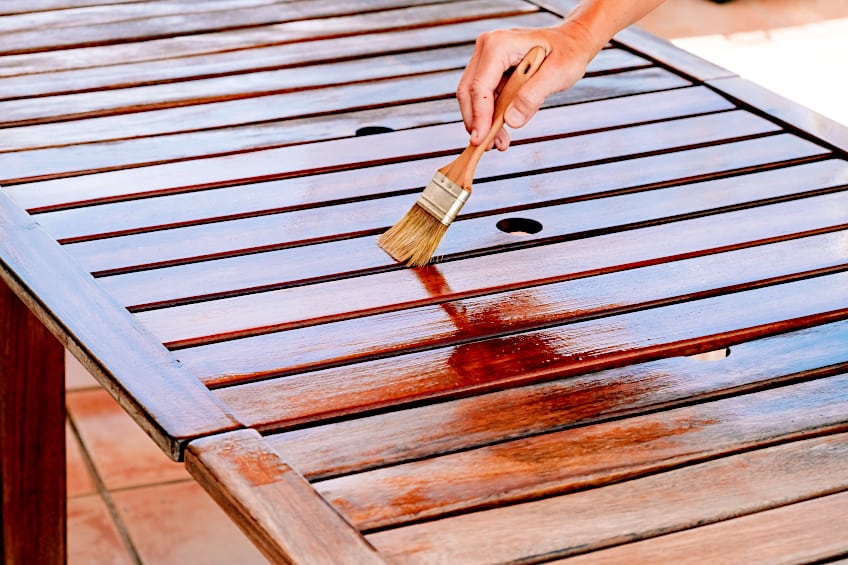
However, if you’re willing to sacrifice the feel of your acacia wood, you could simply apply some resin to the surface of your acacia furnishings to seal it and avoid maintenance almost entirely. Teak, on the other hand, doesn’t have any of the aforementioned issues. Remember those natural oils that teak has inside it? Well, those keep the wood from becoming brittle and splitting, which means the frequency of maintenance is greatly reduced.
When treated, both wood species can be cleaned with simple soap and water, and if sealed, you might not even need the soap if you’re just cleaning off the odd scuff mark or coffee stain. However, if you’re looking to do a deep clean on teak and acacia surfaces, we recommend only using a brush with soft bristles to avoid damaging the surface of your workpiece.
Now that you know what both acacia and teak wood is, what both wood species can be used for, and some of the key difference between the two, which is easier to maintain, and which responds better to wood treatment, it’s time for you to get out there and put your newfound knowledge to the test. Remember that a little bit of elbow grease can go a long way, especially if you’re working on a budget, and always consider your application and its impact on your wood when making your choice.
Frequently Asked Questions
Is Teak a Cheap Wood?
Teak wood is by no means a cheap wood species. However, it is objectively well worth the price. Teak wood is extremely durable, and it also happens to be completely waterproof. This means that it can be used to replace a wide range of materials with a simple wood board.
Is Acacia a Good Wood?
Is acacia a good wood? In the context of the type projects acacia is typically used for, acacia is a good wood. Acacia is primarily used in the construction of flooring, furniture, and structural beams. Considering that it’s strong, durable, and water-resistant, it is extremely good at its job.
Is Teak or Acacia Better?
Considering that they’re both used for similar applications, teak wood squeaks out the win. Teak wood is slightly more durable, better looking, more resistant to moisture, requires less maintenance, and is held in higher esteem than acacia. However, teak wood is more expensive and is more challenging to work with.

I have been into woodworking since 2005 and woodturning since 2011. Because of my love for wood and woodworking, I started woodhappen.com to teach other enthusiasts about how to finish and seal wood, the best woodworking tools, the different types of wood, and everything else related to woodworking! Read more about me here.


